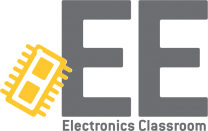
Training Center Classroom
Thermal management – it’s a different kind of management nightmare, especially when it comes to compact, reliability, and high-performance dc-dc converters. How power electronics are packaged can have significant impact on thermal and power density. Passive, magnetics, and electromagnetic integration technologies, as well as 3D power packaging and more, all aim to reduce main bottlenecks to improved power density.
Before you get wrapped up in a package, you can step into this classroom and go back into the basics of thermal management and then deep-dive into the specifications, thermal management, and electromagnetic compatibility considerations of board-mounted dc/dc converters. Additional tutorials walk you through SMPS, regulated, and other types of power supplies.
So, step into the classroom and peruse the tutorials that best help you to power through your next design.

Editor in Chief, EE World Online




Basics of board-mounted, dc/dc converter reliability
Thermal management considerations for board-mounted, dc/dc converters
Optimizing energy efficiency of converters and controllers
Specifying board-mounted, dc/dc converters
The reliability of board-mounted dc/dc converters is important to understand and quantify. It’s a measure of the frequency of system or device failures as a function of time.
The specification of board-mounted dc-dc converters is an important and detailed process.
System-level thermal design is equally important to the electrical specifications of board-mounted dc/dc converters.
Here’s how to evaluate energy efficiency associated with components that make up widely used power conversion circuitry.


Conducted and coupled EMI/EMC concepts
EMC/EMI design use of board-mounted dc/dc converters
Basic principles of thermal management
This article provides an overview of some considerations for managing conducted and coupled emissions.
High-frequency operation can result in increased EMI from the power switching circuitry in the converter.
There are three general aspects to thermal management – a critical element in all types of electronic equipment.
Basics Power • Supply Types



Designing a Switched Mode Power Supply
How to design a regulated power supply
Basic Electronics: Different types of power supplies
When low currents are needed to be drawn by the load circuit, X-rated non-polarity capacitors can also be used for AC to DC conversion.
A regulated power supply including components necessary to achieve aregulated output voltage with required current.
It is the power supply that gives life to any electronic circuit or device.
Increase your power density with 3D Power Packaging®_English sub
3D Power Packaging (podcast)

3D Power Packaging for Low Power DC DC Converters